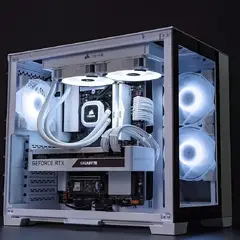Do digital cameras support 4K 120 recording at normal speed?
Go to solution
Solved by Electronics Wizardy,
Just now, KEIN NEIN said:
So I assume the reason for 120/240 fps recording being a thing is the same reason why 8K/12K is available. Not because people will watch in that format, but because it's handy in post.
Yea, >60FPS is pretty much only used for slo mo as almost nothing can distribute >60FPS content.
As far as recording, if the camera says it can do 120, you can get 120 out of it. Some will record in 120, but mark the file for 30fps as 1/4speed slow mo, but you can speed it up in post. Really up to the specific camera.


.png.255947720031a641abdac78e663b681c.png)














Create an account or sign in to comment
You need to be a member in order to leave a comment
Create an account
Sign up for a new account in our community. It's easy!
Register a new accountSign in
Already have an account? Sign in here.
Sign In Now